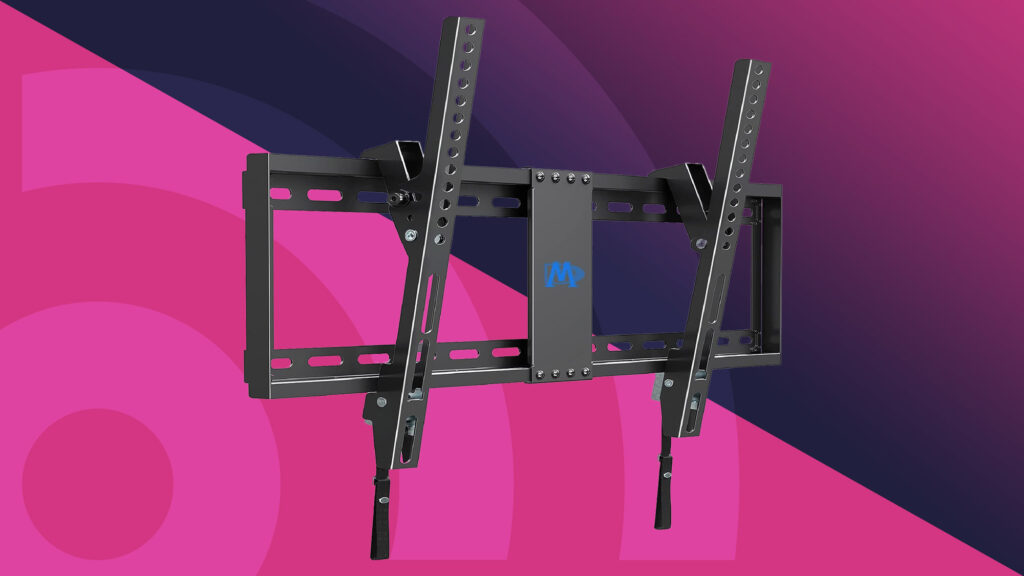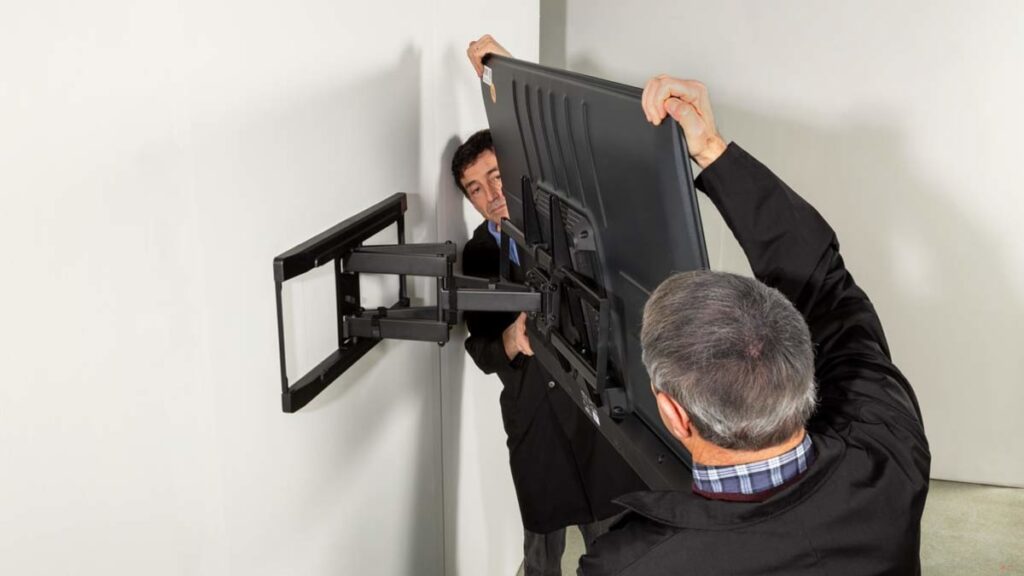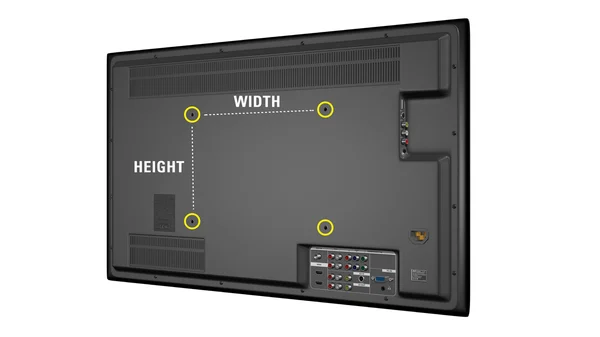Are all TVs mountable?
The sleek appearance of mounted TVs has transformed modern living spaces, making wall mount installations increasingly popular among homeowners. Whether upgrading an entertainment setup or designing a new room, many people wonder about TV wall mount compatibility before making their purchase decisions.
While the majority of contemporary televisions support wall mounting through standardized systems, understanding the nuances of mounting compatibility helps ensure successful installations. This comprehensive guide explores everything you need to know about mounting TVs, from VESA standards to installation considerations.
The mounting process involves more than simply purchasing any bracket and hoping it works. Television manufacturers, mount manufacturers, and industry standards organizations have developed specific requirements that determine whether your TV can be mounted on the wall safely and securely.

Understanding VESA Standards and TV Wall Mount Compatibility
What is VESA?
The Video Electronics Standards Association established universal mounting standards that most TV manufacturers follow today. This organization created standardized hole patterns on the back of televisions, making it possible for different TV wall mount brackets to work across various brands and models.
VESA compatibility ensures that consumers can choose from numerous mounting options without worrying about whether mounts will fit their specific television. The standardization has simplified the mounting process significantly compared to earlier years, when each manufacturer used proprietary mounting systems.
How VESA Patterns Work
VESA patterns refer to the spacing between mounting holes on the back of your TV, measured in millimeters. These patterns follow specific measurements that correspond to screen sizes and weight capacities. Common VESA patterns include 100x100mm for smaller screens, 200x200mm for medium sizes, and larger patterns like 400x400mm or 600x400mm for bigger televisions.
The pattern on the back of most flat-panel televisions consists of four threaded holes arranged in a rectangular formation. When you measure the distance between these holes horizontally and vertically, you get the VESA size that determines mount compatibility.
Understanding your television’s VESA pattern helps you choose the right mount from the wide selection available. Most mount manufacturers clearly label which VESA patterns their products support, making the selection process straightforward once you know your TV’s specifications.
TVs That Are Generally Wall Mount Compatible
LED and LCD Televisions
Most LED and LCD TVs are designed with wall mounting in mind. These flat panel displays typically feature standard VESA mounting patterns and reasonable weight distributions that work well with various bracket types. The slim profile of these televisions makes them ideal candidates for mounting applications.
Television manufacturers have embraced VESA standards for LED and LCD models, ensuring broad compatibility with aftermarket mounting solutions. These TVs generally range from lightweight, smaller models to heavier, large-screen versions, but most fall within acceptable weight limits for standard wall mount systems.
OLED and QLED Models
Premium OLED and QLED televisions also follow VESA compatibility standards, though their ultra-thin profiles sometimes require specific mounting considerations. These high-end models often weigh less than traditional LCD TVs of similar sizes, making them excellent choices for wall mounting projects.
The thin design of OLED displays means they sit very close to the wall when mounted, creating a sleek, modern appearance. However, this proximity requires careful attention to ventilation and cable management during installation.
Smart TV Integration
Smart TVs across all major brands typically include VESA-compatible mounting holes. Samsung, LG, Sony, and other manufacturers design their smart TV models with mounting in mind, recognizing that many consumers prefer wall-mounted installations for their connected entertainment systems.
The integration of smart features doesn’t typically affect mounting compatibility, as the electronic components are distributed throughout the television’s chassis without interfering with the standard mounting hole pattern.
Televisions That May Present Mounting Challenges
Older CRT Models
Traditional cathode-ray tube televisions present significant mounting challenges due to their weight and depth. These older models rarely include VESA-compatible mounting points, and their substantial weight often exceeds the capacity of standard wall mount systems.
The deep profile of CRT TVs also creates leverage issues that can stress mounting hardware beyond safe limits. Most professionals recommend against mounting CRT televisions unless specialized heavy-duty mounting systems are employed.
Budget Television Models
Some budget-oriented televisions may lack standard VESA mounting holes to reduce manufacturing costs. These models typically target price-conscious consumers who may not prioritize wall mounting capabilities in their purchase decisions.
Before purchasing an inexpensive TV with mounting intentions, verify that the model includes VESA compatibility in its specifications. The cost savings from a budget model can be offset by the inability to mount it properly.
Curved Display Considerations
Curved televisions require special mounting considerations due to their unique shape and weight distribution. While many curved TVs include VESA mounting points, the curved design affects how they interact with flat wall mount brackets.
Standard mounts may not provide optimal support for curved screens, potentially leading to stress points or suboptimal viewing angles. Specialized curved TV mounts are available but may be more expensive than standard options.
Extremely Large Models
Televisions exceeding 75-85 inches often require specialized mounting solutions due to their size and weight. While these large TVs typically follow VESA standards, they may need commercial-grade mounting hardware or professional installation to ensure safety.
The sheer size of these displays also creates logistical challenges during installation, often requiring multiple people and specialized tools to handle safely.
Physical Limitations and Wall Mount Considerations
Weight Distribution and Wall Strength
The weight of your TV determines the type of wall construction and mounting hardware required for safe installation. Drywall installations typically require mounting to wall studs or use of heavy-duty wall anchors rated for the television’s weight.
Different wall types support different weight limits. Standard drywall construction can support moderate weights when properly anchored to studs, while masonry walls can typically handle heavier loads with appropriate anchors.
Mounting Depth and Clearance
The back of the tv design affects how close the television sits to the wall when mounted. Some televisions have protruding components or unusual back panel designs that require specific bracket types or additional clearance considerations.
Cable management also influences mounting depth requirements. Televisions with multiple input ports may need brackets that provide additional space away from the wall to accommodate cable connections without damaging cords.
Ventilation Requirements
Mounted TVs need adequate ventilation to prevent overheating. The proximity to the wall can restrict airflow around the television, particularly for models with rear-facing ventilation systems.
Some mounting positions may block ventilation ports or create heat buildup issues. Understanding your television’s cooling requirements helps determine appropriate mounting clearances and bracket types.

Different Types of TV Wall Mount Brackets
Fixed Wall Mounts
Fixed mounts hold the television in a stationary position close to the wall. These simple, cost-effective brackets work well for dedicated viewing positions where adjustment isn’t necessary. Fixed mounts typically support the highest weight capacities while maintaining the lowest profile.
The simplicity of fixed mounting systems makes them popular for bedrooms, kitchens, and other areas where the viewing angle remains consistent. Installation is typically straightforward, and these mounts cost less than adjustable alternatives.
Tilting Wall Mount Options
Tilting wall mount brackets allow vertical angle adjustment while maintaining a relatively low profile. This feature helps optimize viewing angles and reduce glare, particularly for televisions mounted higher than eye level.
A tilting wall mount provides more flexibility than fixed options while remaining more affordable than full-motion alternatives. The tilt mechanism allows fine-tuning of the viewing experience without the complexity of multi-directional movement.
Full-Motion TV Mount Systems
Full-motion mount systems provide maximum flexibility with articulating arms that extend, retract, and swivel. These versatile brackets allow positioning the television at various angles and distances from the wall, accommodating multiple viewing positions.
A full motion tv mount works well in rooms with multiple seating areas or where the television needs to serve different purposes. However, these mounts typically cost more and require more robust wall attachment due to the leverage created by the extending arms.
Installation Considerations and Professional Help
DIY Installation Factors
Many homeowners can successfully complete TV wall mount installations with basic tools and careful planning. The process involves locating wall studs, marking mounting points, and securing the bracket according to manufacturer instructions.
However, mounting your TV requires attention to safety details that affect long-term success. Improper installation can result in damage to the television, wall, or injury to occupants. Understanding your skill level and comfort with the project helps determine whether professional installation is advisable.
When to Hire a Professional
Complex installations involving large televisions, difficult wall types, or integrated home theater systems often benefit from professional installation. An experienced installer brings specialized tools, knowledge of building codes, and insurance coverage that protects against installation errors.
Professional installation becomes particularly valuable for expensive TV models where installation mistakes could result in costly damage. The investment in professional service often pays for itself through proper installation and warranty protection.
Mounting Hole Alignment and Hardware
Proper alignment of mounting holes on the back of the television with the wall bracket requires precision and patience. Misalignment can stress the mounting points or prevent secure attachment of the television to the bracket.
Quality mounting hardware includes all necessary screws, washers, and spacers to ensure proper connection between the television and bracket. Using incorrect hardware can compromise the installation’s security and potentially void warranty coverage.
Compatibility Verification and Selection Process
Checking VESA Compatibility
To determine if your tv is VESA compatible, examine the back of your television for four threaded holes arranged in a rectangular pattern. Measure the distance between these holes horizontally and vertically to determine your TV’s VESA size.
Most television manuals or manufacturer websites list VESA compatibility information in the specifications section. This information helps ensure you choose the right mount that matches your television’s mounting pattern.
Weight and Size Considerations
The size of your tv and its weight determine the appropriate mounting hardware strength. Bracket manufacturers specify maximum weight and screen size limits for their products, and exceeding these limits compromises safety.
Consider both current weight and any future upgrade plans when selecting mounting hardware. A slightly oversized bracket may accommodate future television upgrades without requiring complete remounting.
Manufacturer Specifications
Television manufacturers provide detailed mounting specifications that include VESA patterns, weight limits, and any special requirements. Samsung and other major brands typically include comprehensive mounting guides with their products.
Following manufacturer recommendations ensures compatibility and maintains warranty coverage. Some manufacturers void warranties if their televisions are damaged due to improper mounting hardware or installation procedures.
Special Mounting Scenarios
Outdoor Television Installation
Outdoor televisions require specialized mounting solutions that withstand weather exposure and temperature variations. These installations often need weatherproof brackets and additional protection considerations beyond standard indoor mounting.
The mounting hardware for outdoor applications must resist corrosion and maintain strength despite exposure to moisture and temperature cycles. Professional installation is often recommended for outdoor television projects due to these additional challenges.
Commercial Display Mounting
Commercial displays and digital signage often use enhanced VESA patterns or specialized mounting systems designed for continuous operation environments. These applications may require commercial-grade mounting hardware that exceeds residential specifications.
Business installations frequently involve multiple displays or video wall configurations that demand precise alignment and professional installation expertise. The mounting requirements for commercial applications often differ significantly from residential projects.
Retrofit and Upgrade Considerations
Upgrading to a newer television while using existing mounting hardware requires verification of compatibility between the old bracket and new TV’s specifications. VESA standards ensure some interchangeability, but weight and size limits may have changed.
Existing wall preparation and stud locations may accommodate new television installations, but changes in TV size or weight might require mounting hardware upgrades. Planning retrofit installations helps avoid compatibility surprises during the upgrade process.
Advanced Mounting Topics
Cable Management Solutions
Proper cable management maintains the clean appearance of wall-mounted televisions while protecting connections from damage. Many TV wall mount systems include cable routing features or work with separate cable management accessories.
Planning cable routing during the mounting process prevents the need for visible cables that detract from the mounted television’s appearance. In-wall cable routing provides the cleanest installation but may require professional installation or electrical work.
Multi-Display Configurations
Multiple television installations require coordination of mounting heights, angles, and spacing for optimal viewing. Video wall applications demand precise alignment that typically exceeds the capabilities of standard consumer mounting hardware.
Professional installation becomes essential for multi-display projects due to the complexity of alignment and the consequences of installation errors across multiple expensive displays.
Integration with Home Automation
Smart home integration may influence mounting decisions, particularly for installations that include motorized mounts or integrated control systems. These advanced mounting solutions often require additional wiring and professional installation expertise.
Considering future automation plans during initial mounting helps avoid compatibility issues or the need for extensive modifications later. Professional installers experienced with home automation can provide valuable guidance for these advanced installations.
Conclusion
Most modern televisions are designed to be mounted on the wall using standardized VESA mounting systems that ensure broad compatibility across different brands and models. Understanding your television’s specifications, weight requirements, and mounting pattern helps ensure successful wall mounting projects.
The key to successful TV wall mount installation lies in proper planning, appropriate hardware selection, and careful attention to safety requirements. While many installations can be completed as DIY projects, complex scenarios or valuable equipment often benefit from professional installation services.
Whether choosing a fixed bracket for simple installations or a full-motion mount for maximum flexibility, the wide variety of mounting solutions available today can accommodate most television mounting needs. Taking time to understand compatibility requirements and installation considerations leads to successful mounted TVs that enhance your viewing experience for years to come.
